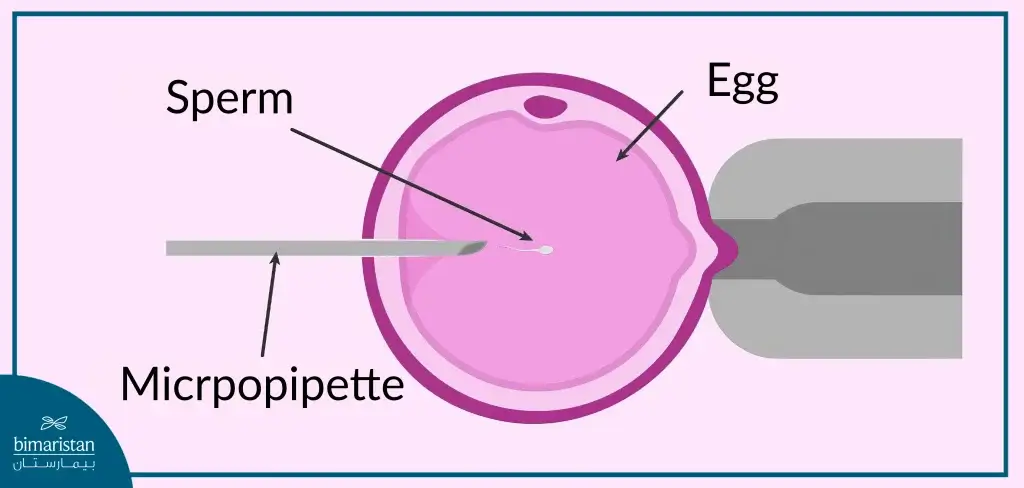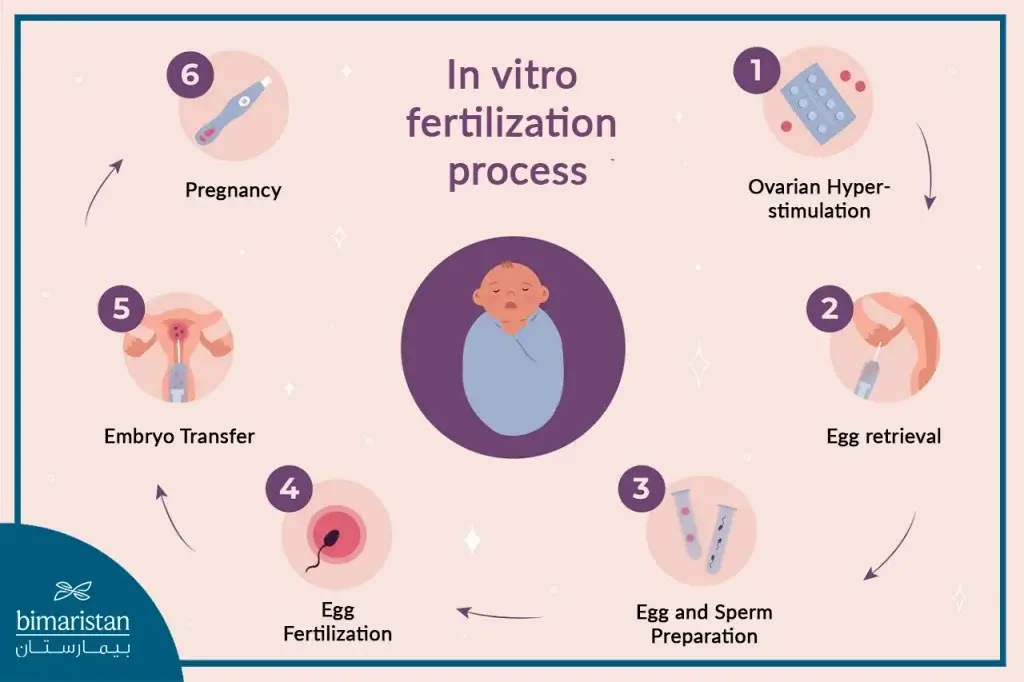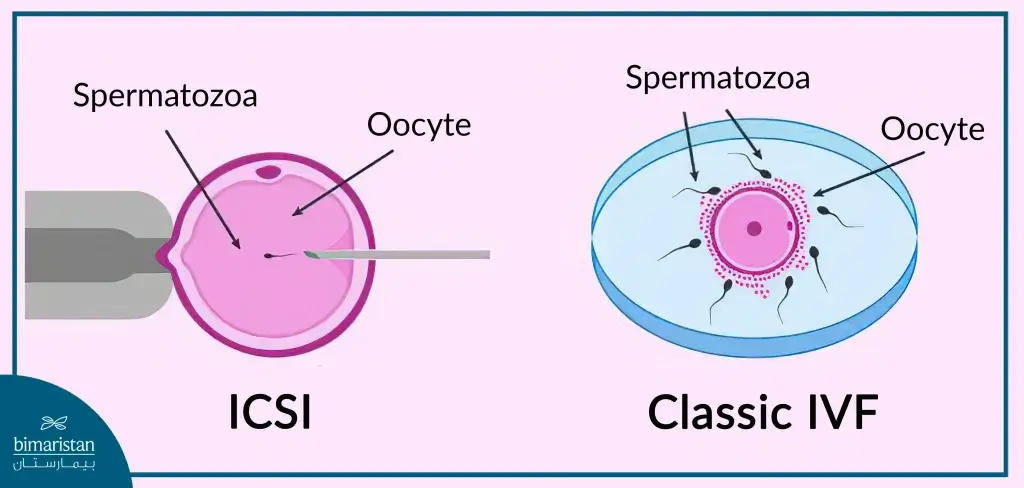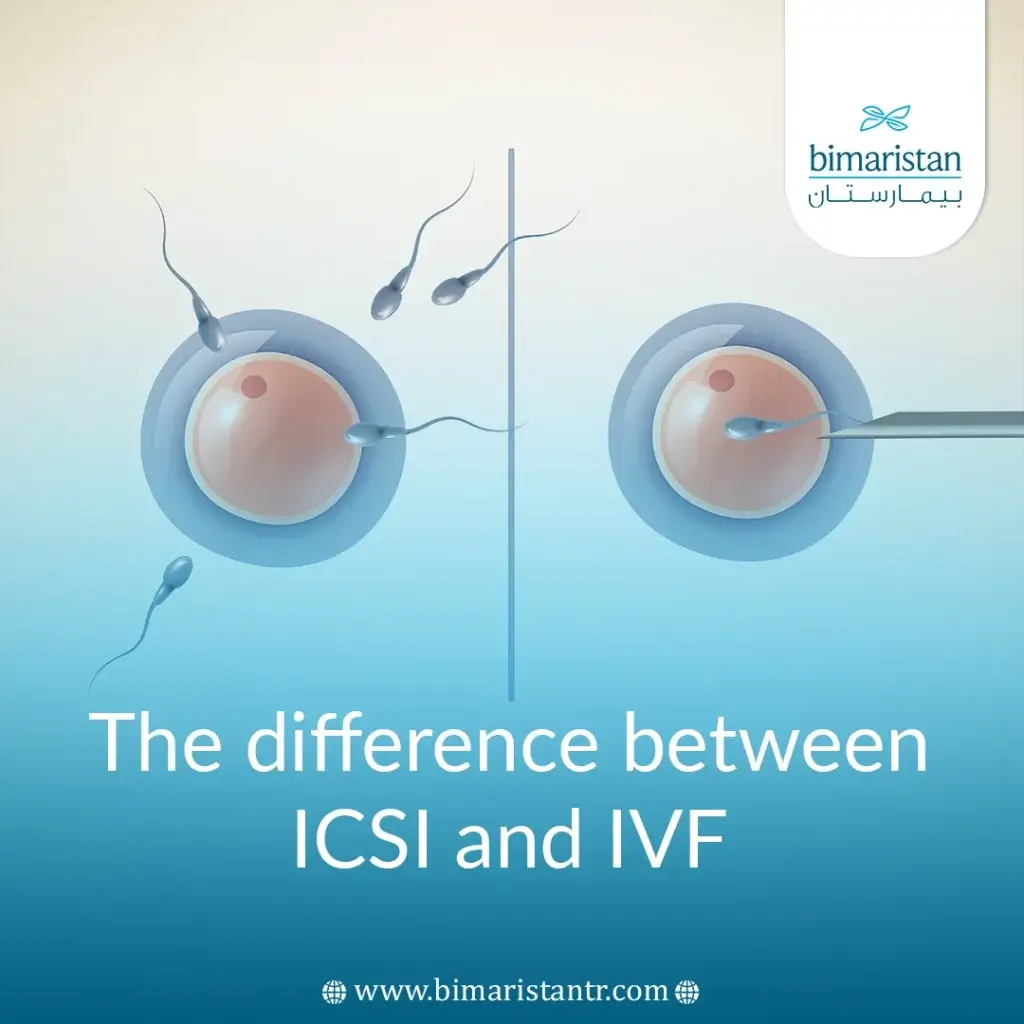Infertility is a health problem that affects both men and women. Among the cases of infertility that have been diagnosed, 50% of couples suffer from fertility problems in females, 50% in males, and 28% in both spouses. Here, assisted reproductive methods are used to treat the problem in both sexes, which helps To overcome the existing defect for successful insemination, continue reading this article to learn the difference between IVF and ICSI, which are among the most popular methods used recently to treat fertility problems.
Before a man’s sperm can fertilize a woman’s egg, its head must attach to the outside of the egg, once attached, the sperm rushes through the outer layer into the cytoplasm, where fertilization occurs.
Sometimes the insemination process does not take place for several reasons related to problems that may be related to the sperm in the man and the egg in the woman. Then what is called intracytoplasmic sperm injection (ICSI) can be performed along with artificial fertilization (IVF) or what is known as in vitro fertilization to help fertilize the egg.The vaccination process is completed.
What is In Vitro Fertilization – IVF?
Artificial fertilization or in vitro fertilization is considered the most common and effective type of assisted reproductive technology (ART), in which the eggs extracted from the ovaries are combined with the sperm manually in the laboratory outside the woman’s body, after several days of fertilization, the fertilized egg (embryo) is placed inside the uterus and pregnancy occurs upon implantation. This fetus is in the uterine wall.
When is IVF pregnancy confirmed?
Confirming the pregnancy requires waiting for two weeks after transferring the embryos to the uterus.
This period can be considered long due to concern about not knowing the success of the treatment or not, as some people find this part to be the most difficult part of the infertility treatment journey.
What is Intracytoplasmic Sperm Injection – ICSI?
ICSI, or intracytoplasmic sperm injection, is a form of artificial fertilization that doctors commonly resort to when there is a problem with male infertility.
It involves selecting the strongest and most mobile sperm and then injecting one sperm directly into the fertile egg using a fine needle special for fertilization. the assistant.

Steps for ICSI and IVF
The difference between IVF and ICSI will be discussed in terms of the steps of both procedures.
Steps for IVF treatment
The stages of artificial fertilization can be divided into the following:
- Stopping the natural menstrual cycle: This is done by giving birth control pills or estrogen to control the timing of the menstrual cycle and give better results in the egg retrieval stage by increasing their number.
- Ovarian stimulation: During the natural cycle, only one mature egg is produced, sufficient for ovulation, but in artificial insemination, an entire group of eggs is stimulated to mature simultaneously and completely by giving an injection of FSH (follicle-stimulating hormone) and the patient’s response is then monitored by ultrasound. Ultrasound and detection of hormone levels in the blood. Most stimulation processes last between 8 and 14 days, and when the eggs are ready for final maturation, a “trigger shot” is given, which is an injection of the HCG hormone whose mission is to complete maturation in preparation for the next stage.
- Egg retrieval: Eggs are collected after the patient is anesthetized using a needle that is passed through the vagina to each ovary under ultrasound guidance. This simple procedure takes about 20 minutes, during which some women may experience cramps or vaginal bleeding.
- Egg fertilization: All mature eggs collected are fertilized with sperm in the laboratory. This means that sperm will be injected into each mature egg. The fertilized eggs continue to grow in the laboratory for up to 6 days to become embryos that can be transferred to the uterus.
- Embryo transfer: Embryos are transferred a few days after the eggs are fertilized using a thin tube (catheter) that is passed into the vagina. This process is simpler than egg collection, so it usually does not require anesthesia.

Steps for ICSI treatment
In the same way as IVF, sperm and eggs are collected from partners for insemination in the laboratory.
The difference between IVF and ICSI is the way the eggs are fertilized.
ICSI injects each egg with sperm individually, and this bypasses the stage of artificial insemination
Where sperm naturally penetrates.
What are the risks of ICSI?
ICSI carries some risks, like other fertility treatments; It includes the following:
- Eggs are damaged when prepared or injected with sperm
- A very small number of babies born using this technique have some genetic defects, however the problems associated with ICSI may be due to the underlying infertility rather than the treatment itself.
How long does the ICSI process take?
An ICSI cycle usually takes about 4-6 weeks, starting with a physical examination, blood test to measure hormone levels, ovarian stimulation, egg retrieval and sperm collection followed by embryo implantation in the embryology laboratory.
What is the difference between IVF and ICSI?
In artificial fertilization, thousands of sperm are placed next to the egg in a laboratory dish, it is up to chance to fertilize the egg.
In ICSI, fertilization is enhanced through direct injection of one sperm into one egg.
The difference between IVF and ICSI is that they treat infertility depending on the status of fertility problems in the male or female.
In vitro fertilization technology can be used to treat a woman’s ovulation problem caused by polycystic ovary syndrome, a genetic disorder, or damage or blockage of the fallopian tube.
In ICSI, due to the injection of sperm directly into the eggs, it is of greater importance when it comes to fertility problems in men.
ICSI is also possible if sperm are frozen or surgically removed from the epididymis or testicle.

Which is better, ICSI or IVF?
The fertility doctor determines the best IVF solution for each couple based on the ovulation test result and the strength of the fish-shelled sperm and eggs.
When are IVF and ICSI necessary?
Doctors resort to the ICSI technique to treat male infertility because there is an obstacle that prevents the sperm from penetrating the egg, such as the following cases:
- Low sperm count
- The presence of a large number of deformed sperm
- Poor sperm motility
- There are no sperm in the semen, and therefore they are surgically extracted from the epididymis or testicles
- The presence of an antibody to the sperm of the partner
- Using frozen eggs or sperm
The common reasons that prompt doctors to choose IVF technology include the presence of one of these problems in women:
- Fallopian tube blockage
- Uterine fibroids
- Mother’s age is over 35 years
- Recurrent miscarriage
In the end, the difference between IVF and ICSI lies mainly in the fertilization technique.They are both advanced techniques to assist in reproduction, but each of them includes advantages and disadvantages. Couples must consult a doctor to determine the best option according to their health condition and medical history.
